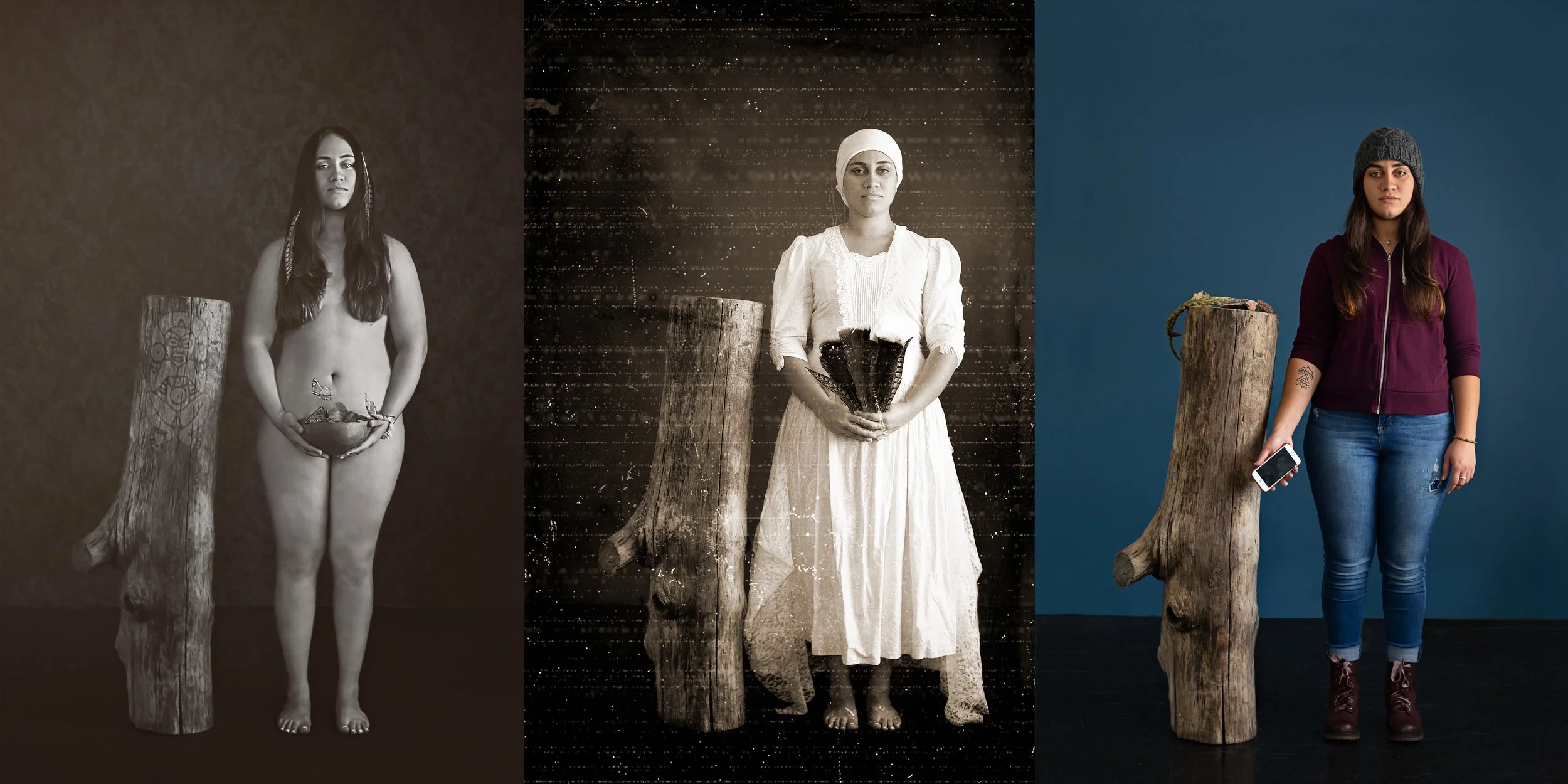“Reflections on Indigeneity in the Bronx” is a reflection on those among us who continue to live and practice Taíno traditions. The Taíno are an indigenous people of the Caribbean, the pre-colonial inhabitants first encountered by European explorers and conquerors. The Bronx Women’s Photo Collective exposes this complicated past, and explores how it is manifested today through three distinct photographic styles: fantastic realism, fine art and documentary. Each style is required for this is a story that spans centuries and includes conquest, colonialism, and current events.
The descendants of Taínos, Puerto Ricans migrated to the mainland of the United States in large numbers after the passage of the Jones Act in 1917, which granted them U.S. citizens. Approximately 5.8 million Puerto Ricans currently live in the U.S., nearly twice the number who remain on the island. Those who are here—including about 300,000 who live in the Bronx—struggle to maintain their ancestral roots. And for many, that involves making a connection to the Taíno past through workshops and native gatherings. Our photographic exploration of these connections weaves together elements of an unseen past, brutal history and modern day struggle for identity and connection.
Our work is more important now than ever. Hurricane Maria in 2017 and the earthquakes of 2020 have hastened the departure of people from the island, seeking work and stability. The rate of displacement is unprecedented, as is the threat of cultural heritage erasure. Recognizing and elevating the resilience of people who seek out and practice Taíno traditions is critical in strengthening our connections to our heritage and island.
Triptych
Taínos, an indigenous people, were once the principal inhabitants of the Caribbean, and their genetic heritage survives among many who now call themselves Puerto Ricans, Dominicans and Cubans. This triptych combines the styles of our three distinct photographic projects. The first image is an idealized portrait of a young Taíno woman before the time of European conquest. The second depicts her as a descendant with African and Taíno roots, as she might have looked in colonized Puerto Rico in the late 1800s. The final image shows the same woman, Mellisa Rivera, in modern times, in the clothes she wore at a protest for Native American rights. Together, they represent a woman’s search for her Taíno roots.

